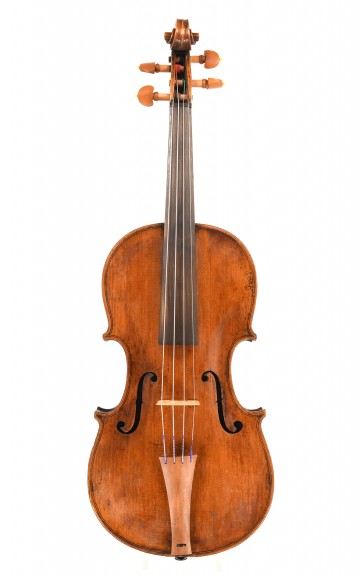The rise of western-Bohemian violin making. The first phase: the emigration of Protestant violinmakers in the 17th century
The history of violin making in northwestern Bohemia is a history of borders, a story of migration, exile – and the power of art to transcend boundaries. Its origins may date back as far as the 16th century, an age of mining when villages such as Graslitz (Kraslice) and Schönbach (Luby) flourished for the first time. When the first western Bohemian violins were built by miners at home within their family circle, was the objective for people to improve their modest incomes, or were they creating instruments for their own use? The first clearer evidence indicates a third possibility and gives rise to the theory that musical instruments in the Bohemian-Saxonian border country were built on a “professional” basis from early on. A document dating back to 1610 spoke of the “painter and instrumentist” Johannes Artus in Graslitz, who was probably an émigré instrument maker. The honour of being the earliest known violin maker in Graslitz, however, is held by Melchior Lorenz, a miner's son whose marriage papers were signed in 1631.
Violin making in western Bohemia did not truly gain a historical profile until the second half of the 17th century, when people in Graslitz and Schönbach had to seek exile due to the Counter-Reformation and took their art with them to nearby Klingenthal and Markneukirchen. Upon relocating to Protestant Saxony, violin-making families from Schönbach and Graslitz made names for themselves. Little documentation of their history prior to that time has survived due to the 1739 fire in Schönbach that destroyed the city, including its church and municipal archives.
It would seem that Protestant emigration practically brought violin making on the Bohemian side of the border to a stillstand. By contrast, the people in the Vogtland benefited from Saxony's economic upswing in the 18th century, and a highly effective sales system developed at an early date, particularly in Markneukirchen. The violin making tradition that was re-established in the 1720s in Schönbach and in the 1770s in Graslitz was always marked by the influences of the merchants and “publishers” (i.e. brokers) on the other side of the border whose sales capacities Bohemian and Saxonian violinmakers competed for. After only around 100 years, the forced emigration of Protestants had given rise to a joint centre of industry in Bohemia and Saxony – a remarkable twist of history.
Related articles:
Violin making in western Bohemia and the Vogtland region
Markneukirchen: violin making in “German Cremona”
Klingenthal: the origin of violin making
Hopf: a dynasty of Vogtland violin makers
Ernst Heinrich Roth: a rediscovered master






